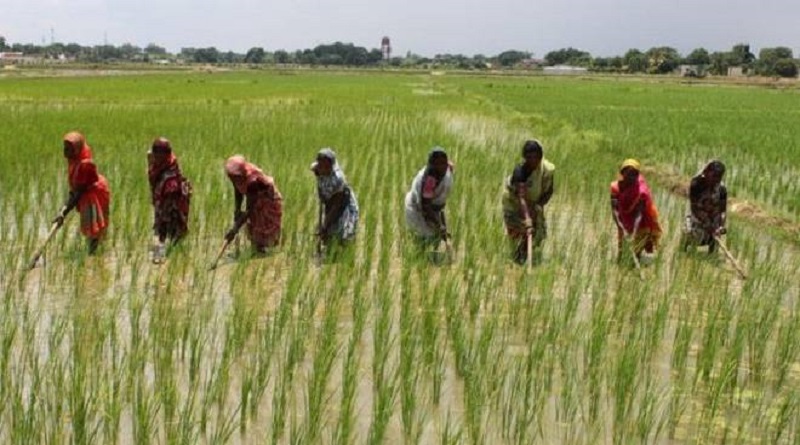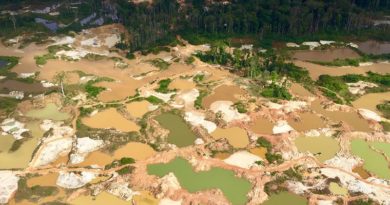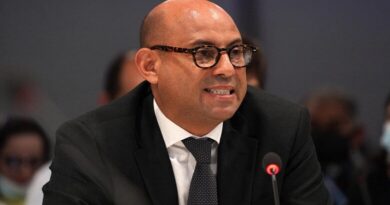Rethinking poverty eradication, food security through agriculture in Africa
Agriculture in Africa is expected to meet the dual objectives of providing food and helping people to escape poverty but, in practice, this is rarely possible on the small farms that cover the vast majority of the continent’s agricultural landscapes. It’s time for policymakers, agricultural researchers and practitioners to recognize the need to separate food security and poverty eradication, argue a team from World Agroforestry (ICRAF), International Crops Research Institute for the Semi-Arid Tropics, Bangor University and Oxford Martin School.
The research team argues that the expectation of the development sector is that if the gap between actual and potential yields can be closed, smallholders will grow sufficient crops to feed their families, with a surplus to sell, thereby meeting food security needs and bringing in an income to move them out of poverty.
‘However, we question investments into small-scale agriculture that either explicitly or implicitly create expectations that improvements to current farming practices alone will lift people out of poverty’, said Anja Gassner of ICRAF, lead author of the article published in the journal Outlook on Agriculture.
In practice, they say, although technologies already exist that can increase smallholding farmers’ yields three or four times but the small size of land available to each farmer limits how much can be grown and therefore sold. The per capita income from such agriculture is insufficient to move these farmers above the World Bank-defined poverty line of USD 1.90 per person per day.
Further, their research into typologies of farmers shows that there are large differences between individual farming households in terms of incentives to invest in farming and farmers’ ability to benefit from field technologies aimed at increasing productivity. Consequently, the team argues for more differentiated policies for agricultural development in Africa.
‘We suggest that policymakers should be much more aware of the heterogeneity of farms and target interventions accordingly,’ said Gassner. ‘It’s important to understand where, and for whom, agriculture will have the main purpose of ensuring food and nutritional security and where, and for whom, there is the potential for significant increases in incomes and a contribution to wider economic growth. Let us recognize the distinctiveness of these targets and underlying target groups and work towards solutions that address their needs.’
The conflation of the two development challenges within any one intervention is highly problematic, argue the authors, resulting in unrealistic expectations that a large share of investments in agricultural development should contribute to helping smallholders to farm themselves out of poverty while at the same time providing sufficient food for all.
The argument that agricultural productivity of smallholders is the key to achieving both alleviation of poverty and secure food supplies depends on them adopting farm-level technologies that increase their productivity and production. This productivity focus has resulted in an obsession with farm-level technologies that maximize yields, assuming that increases will be sufficient to make these technologies attractive to farmers. But, in Sub-Saharan Africa, most farms are too small to generate incomes sufficient for households to rely solely on agriculture for their livelihoods and so they have very little incentive to invest more of their time, labour or scarce assets in agriculture.
‘We need to appreciate the difference between an “effective” technology — one that works in a technical sense — and an “attractive” technology, one that works in the complex context of a farming household,’ said Gassner.
The authors agree with the emerging thinking in decision science and behavioural economics that development strategies can only be effective if they take into consideration the incentives or constraints of the people whose behaviour they are trying to change. As a consequence, policies and programs are needed that put a stronger emphasis on providing the enabling conditions for farmers to change rather than focusing solely on technical aspects.
‘Agricultural development programs need to appreciate farming households as partners in a public–private partnership,’ said Kai Mausch, one of the authors, ‘not simply as beneficiaries of advanced agricultural technologies. Intensification technologies aimed at closing the yield gap should rather be targeted at medium- and larger-sized farming operations as well as those smallholders who have the incentive and potential to invest and benefit.’
In addition, governments need to equip their extension services with access to, and understanding of, a diverse portfolio of flexible, farm-level interventions with affordable and transformative technologies aimed at farmers with low capabilities or limited aspirations, which would help to increase household food security but might not have a significant effect in closing the yield gap.
‘If we follow Amartya Sen’s argument that freedom of choice is both the primary end and the principal means of development,’ said Gassner, ‘the question then should be how to allocate the scarce resources of rural interventions to ensure that farmers have access to all the agricultural input they need to optimise their production system according to their own needs and wishes in a sustainable way while providing opportunities to rural households — especially young people — to diversify their livelihoods’ portfolio, especially by taking up non-farm opportunities.’
Undoubtedly, investments into the agricultural sector are critically important but the chances of making these investments work for farming households depend on understanding of their livelihoods’ structures and the links between the agricultural and other sectors, as well as other rural and urban areas.
‘What the team is essentially arguing,’ said Ravi Prabhu, deputy director-general for research with ICRAF, ‘is a paradigm and system change supported by policies that recognize heterogeneity and diversity as values to be built upon.’
To put it another way: the future of the planet’s agricultural systems needs to be that one size does not fit all.




